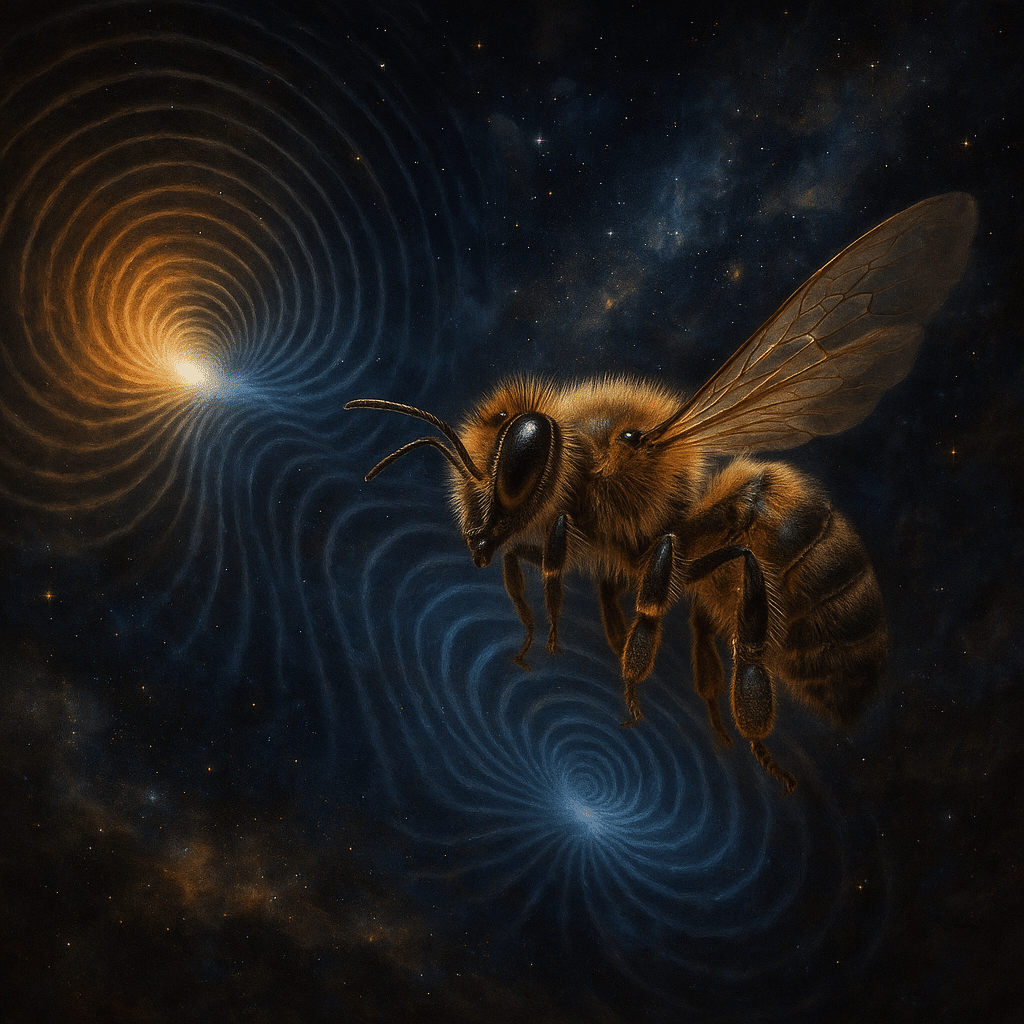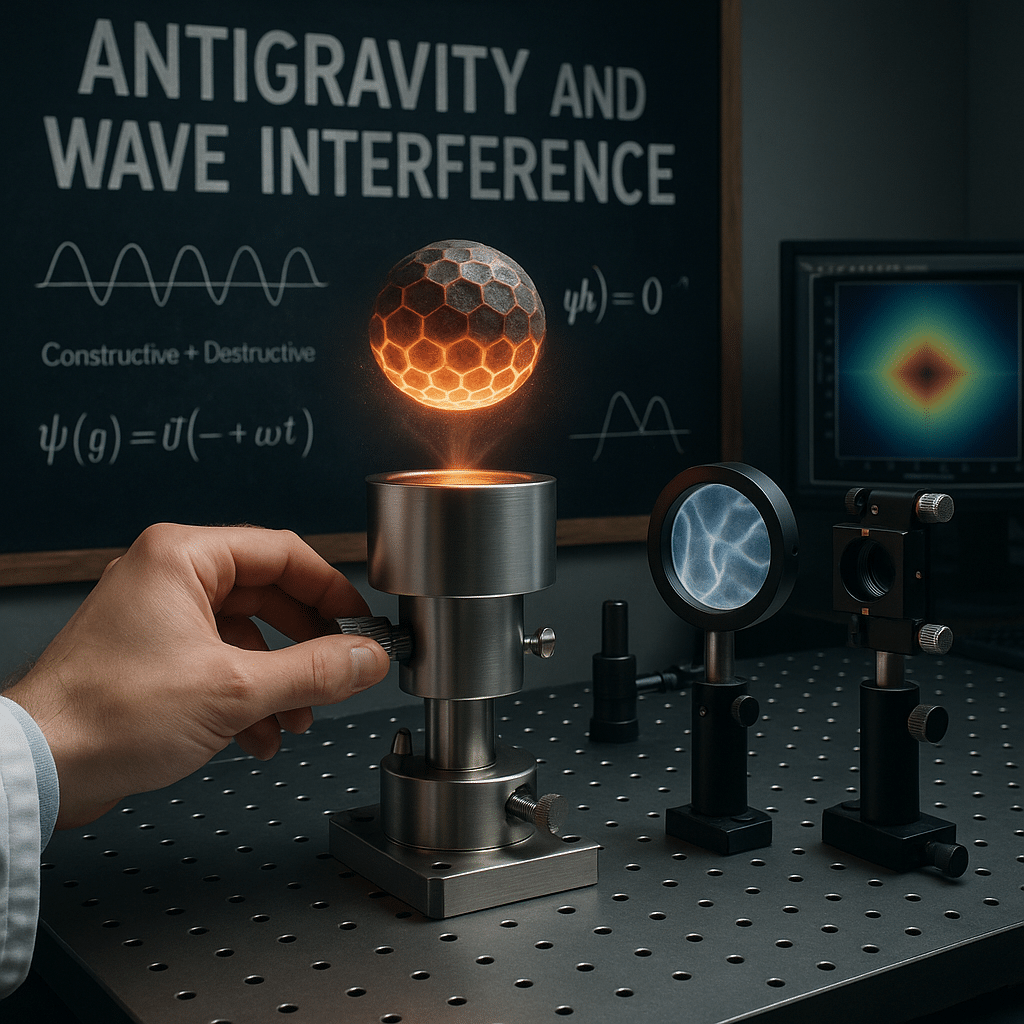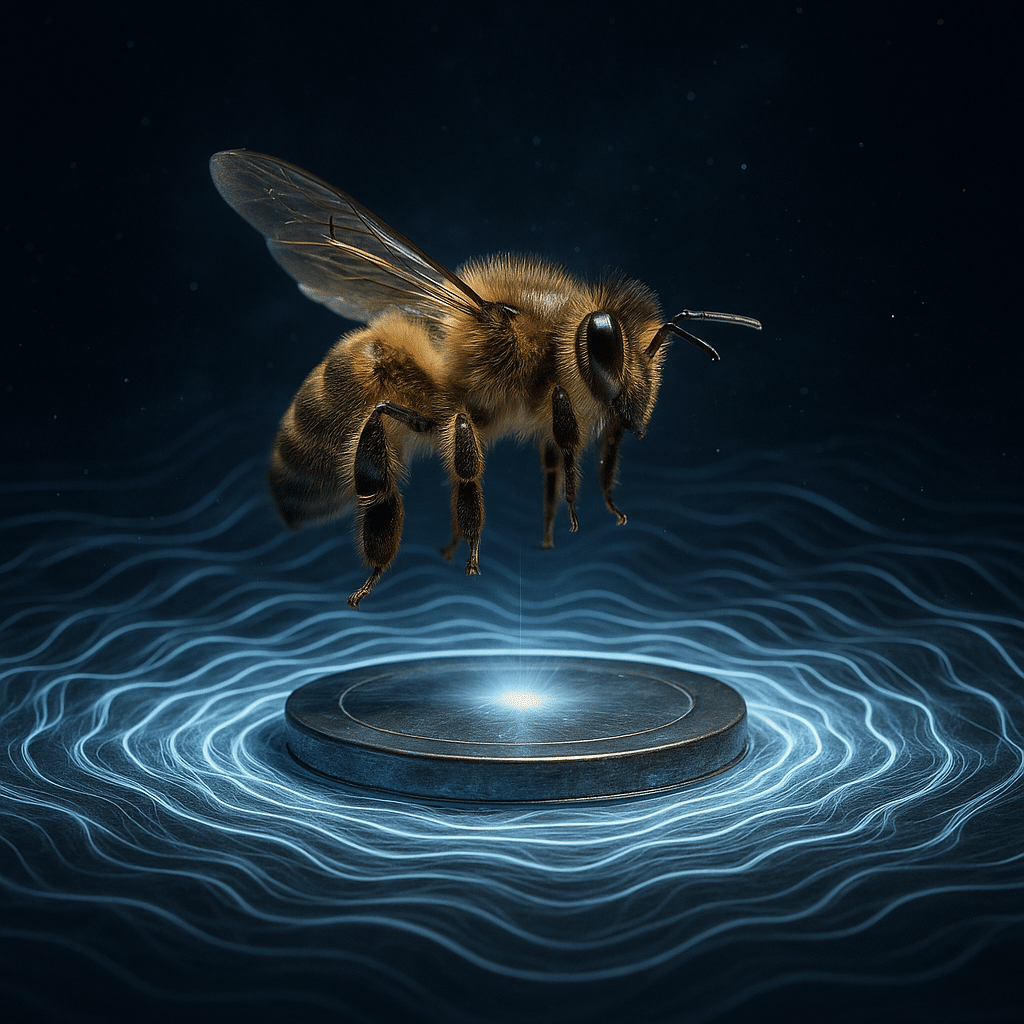Antigravity and Wave Interference: The BeeTheory Perspective
TL;DR: BeeTheory proposes that gravity arises from coherent wave interactions in the quantum vacuum. In this framework, antigravity is not a violation of physics but a possible interference effect — where opposing gravitational wave phases locally neutralize curvature. While still theoretical, such interference dynamics could one day inform propulsion systems that manipulate spacetime gradients rather than resist them.
Introduction — The Search for Antigravity in a Quantum Universe
Since Einstein’s General Relativity, gravity has been described as the curvature of spacetime. But in the quantum picture, fundamental forces often emerge from exchange particles or field oscillations.
The quest for antigravity — a controllable reversal or cancellation of gravitational attraction — has long fascinated both scientists and the public. Within the BeeTheory framework, this concept is reframed: not as a fictional defiance of gravity, but as a wave-interference outcome of the same underlying field that produces attraction.

Gravity as a Wave Field in BeeTheory
In BeeTheory, the gravitational field is represented as an oscillating tensor field permeating spacetime. Instead of curving geometry directly, mass-energy introduces phase and amplitude modulations in this background wave medium.
\Box h_{μν} = -\frac{16πG}{c^4} T_{μν}The perturbation h_{μν} is not a static curvature but a propagating gravitational wave packet:
h_{μν}(x,t) = A_{μν} e^{i(kx - ωt)}This oscillatory representation allows for constructive and destructive interference, a key feature of BeeTheory’s graviton-like dynamics.
Antigravity as Negative Interference
In classical wave mechanics, two waves of identical frequency but opposite phase can cancel each other. BeeTheory extends this principle to the gravitational domain.
ψg(x,t) + ψ′g(x,t + π) = 0This local null region behaves as if gravity were reduced or neutralized — the mathematical equivalent of antigravity. However, this doesn’t “turn off” gravity; it redirects or redistributes the gravitational field’s influence through interference patterns. These wave nodes could, in principle, create zones of minimal curvature, altering how matter experiences spacetime locally.
Experimental Horizons — From Concept to Laboratory
While no direct evidence yet confirms gravitational wave interference at local scales, BeeTheory provides a testable mathematical structure for exploring it.
- Gravitational wave phase mapping: searching for interference dips with LIGO, Virgo, and KAGRA.
- Quantum vacuum oscillation simulations: using Bose–Einstein condensates or superconducting cavities.
- Resonant mass-field coupling: inducing phase shifts to observe possible inertial anomalies.
Such investigations would not “build” an antigravity engine — but they could illuminate how gravitational energy density might be manipulated through coherent phase control.

Toward Propulsion by Field Interference
If future research confirms that gravitational fields can interfere destructively, a new form of propulsion might emerge. Rather than expelling mass (as in rockets), such systems would aim to modulate local spacetime gradients, producing motion through curvature differentials.
BeeTheory predicts that under precise resonance conditions, phase-controlled gravitation could mimic a pressure gradient in spacetime, potentially producing net thrust without reaction mass.
This concept remains speculative but grounded in wave physics rather than pseudoscience — transforming “antigravity” from fantasy into a frontier of quantum-gravitational engineering.

Pedagogical View — Teaching the Future of Gravity
For students and researchers, BeeTheory offers a bridge between general relativity, quantum field theory, and emergent spacetime models.
Understanding antigravity interference requires mastering:
- Wave superposition principles.
- Tensor calculus for field representation.
- Quantum phase relationships and coherence dynamics.
Exercise: Model a simple two-wave interference pattern and extend it to the metric tensor perturbation
h_{μν}. Discuss under which conditions constructive vs. destructive interference emerges.
Limitations & Open Questions
- Empirical verification: No laboratory experiment yet confirms gravitational wave interference at local scales.
- Energy conservation: How does local field cancellation preserve total stress-energy balance?
- Quantum coupling: Are gravitons phase-coherent across macroscopic distances?
BeeTheory provides a robust mathematical base for these inquiries, but validation will depend on next-generation detectors and quantum field analogs capable of resolving gravitational phase at Planck-scale sensitivity.
Conclusion — A Wave Beyond Curvature
Antigravity, in the BeeTheory framework, isn’t a rebellion against physics — it’s a deeper expression of it. If gravity is fundamentally a wave field, then interference is its natural language, and field manipulation its grammar. Understanding and mastering this language could one day reshape not just propulsion, but our entire relationship with spacetime itself.
Dive deeper into BeeTheory’s wave model of gravity.
Explore our article The Graviton Reimagined: Quantum Waves of Spacetime to understand how field coherence defines the universe’s structure.
Glossary
| Term | Definition |
|---|---|
| BeeTheory | A wave-based model of gravity describing spacetime curvature as coherent oscillations in a quantum field. |
| Antigravity (反重力) | Local reduction or cancellation of gravitational effects via phase interference. |
| Graviton (重力子) | Hypothetical quantum particle representing a single excitation of the gravitational field. |
| Phase interference | Overlapping wave phenomena that amplify or cancel field amplitudes depending on relative phase. |
| Spacetime gradient | Variation in curvature that defines gravitational potential differences. |
Further Reading
- Misner, C. W., Thorne, K. S., & Wheeler, J. A. (1973). Gravitation. W. H. Freeman.
- Rovelli, C. (2004). Quantum Gravity. Cambridge University Press.
- Einstein, A. (1916). The Foundation of the General Theory of Relativity.
- BeeTheory Research Group (2025). Wave-Based Modeling of Gravity and Quantum Field Interference.
- LIGO Scientific Collaboration (2024). Gravitational Wave Phase Interference Studies. arXiv:2404.12511.
